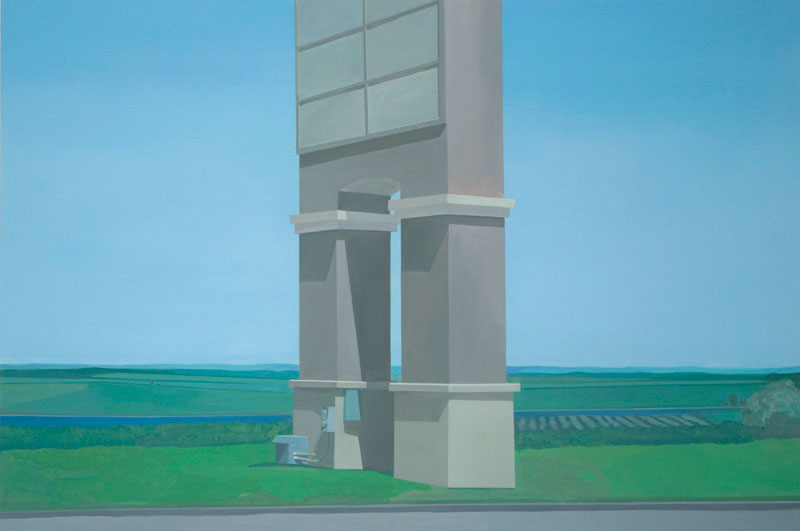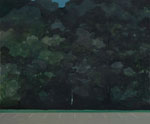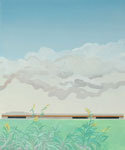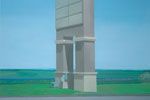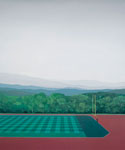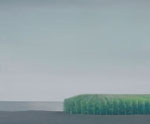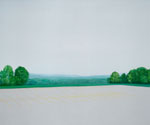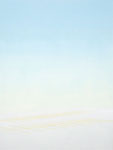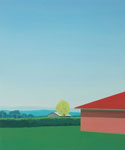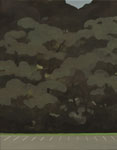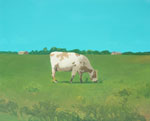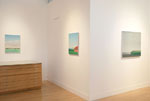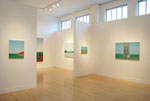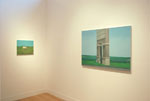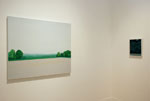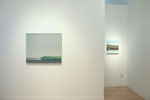Jake Longstreth
Pastures
September 8 - October 15, 2011
In his third solo exhibition at Gregory Lind Gallery, Jake Longstreth continues his exploration of rural and exurban scenes, interrogating idealized notions of the pastoral as a backdrop for today’s built environment. This new body of work is both a significant development and focused consolidation within Longstreth’s artistic practice. A host of contradictory forces are brought to bear in these new works—illusionism vs. decoration, expression vs. manner, abstraction vs. figuration. A vital interplay between subject and form, figurative image and the painted surface emerges.
A pasture, defined as an open space intended for animal grazing, is an ideal; it implies a low-intensity and harmonious relationship between humanity and the environment. Though these works address high-impact industrialized sites, they simultaneously evoke an Arcadian sense of splendor and simplicity, a sort of "idealized Ohio," as Longstreth has put it.
The parking lot is a recurrent motif. A ubiquitous site, not commonly thought to inspire imagination or optimism, it is nonetheless, the starting point for many of these highly interpretative works. Longstreth will often begin a new piece by painting a parking lot and then improvising from there. The parking lots serve not so much as an indictment of contemporary land use practices, but as an opening gambit from which to explore painterly and perceptual space. Woods is an example of this process and emerges from Longstreth’s memory of a drawing he made as a grade school student. The painting is both highly realist and highly abstract as it delves into the paradoxical interplay between a flat, indeterminate mass of trees and a deftly articulated sense of depth and space. The darkness of the piece affords it a dreamlike intensity that many of the pieces in this show share. Cornbelt, directly inspired by the book The Omnivore’s Dilemma, is a stark and vivid depiction of an agricultural landscape transformed by technology. Longstreth explores the bland homogeneity of cornfields while making explicit the underlying darkness of a crop transformed by technocratic and global forces. Longstreth’s vivid yet eerily vacant and saturated landscapes are born from a restless practice of experimentation and plot worlds that are more visionary than observational. Denuded of extraneous details, the paintings evoke memories of things seen, felt, or perhaps merely driven past. The works also signal a return to oil painting and are grounded in a palpable tension between highly mediated imagery and viscerally felt experience, while examining history, memory and subjectivity, and personal and collective spatial phenomena.
Jake Longstreth received his MFA from California College of the Arts, San Francisco. His recent exhibitions include Skeptical Landscapes, Herter Gallery, University of Massachusetts, Amherst; and The Rule of Typical Things, Gregory Lind Gallery, San Francisco, CA. A recipient of the 2008 Pollock-Krasner Foundation Grant and a 2007 Artist in Residence at the Kimmel Harding Nelson Center for the Arts, Nebraska City, NE, Longstreth has been featured in Art in America, Artforum, and the San Francisco Chronicle. He currently resides in Brooklyn, NY.
EXHIBITION IMAGES - CLICK FOR ENLARGED VIEW
- BACK TO TOP -
